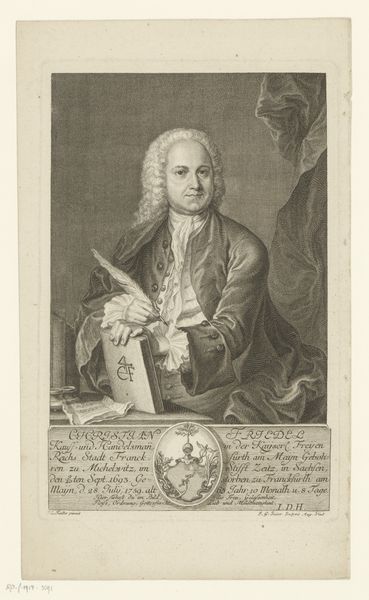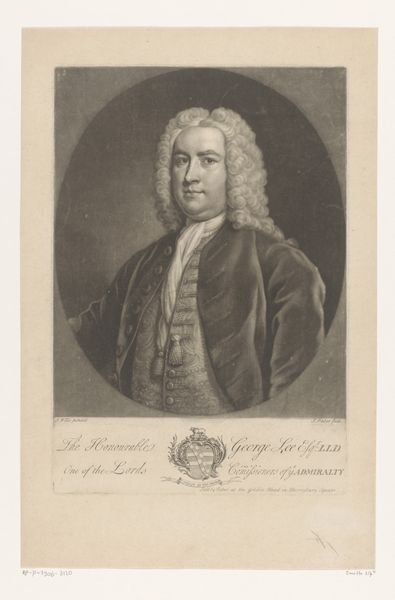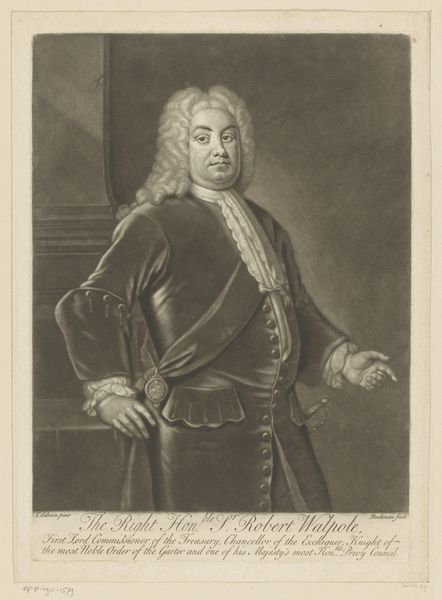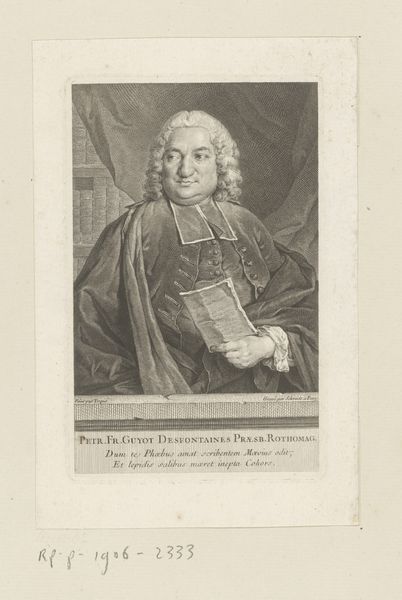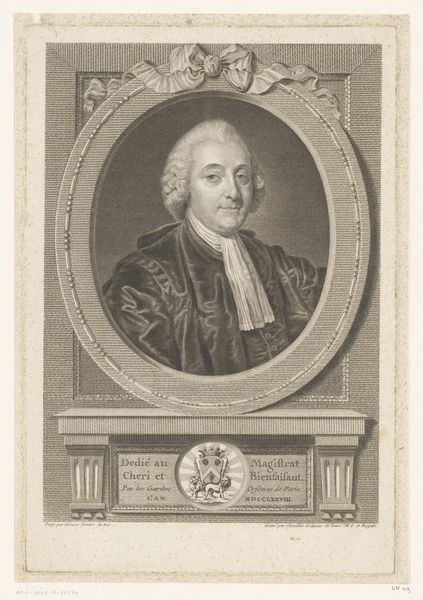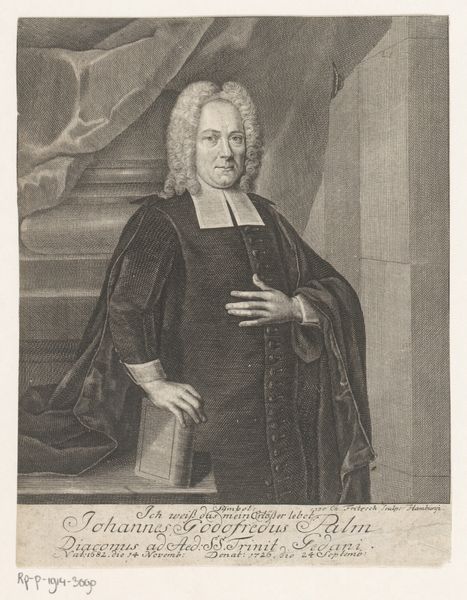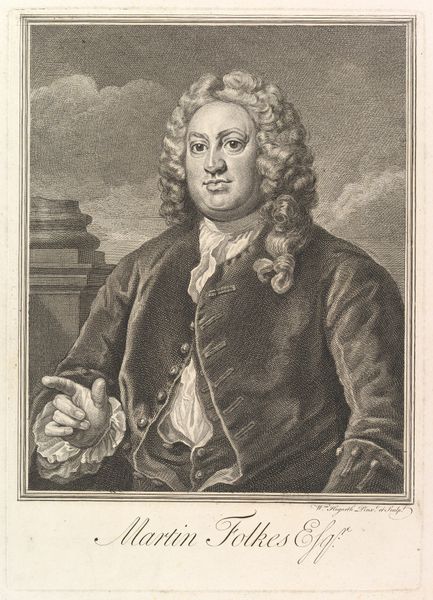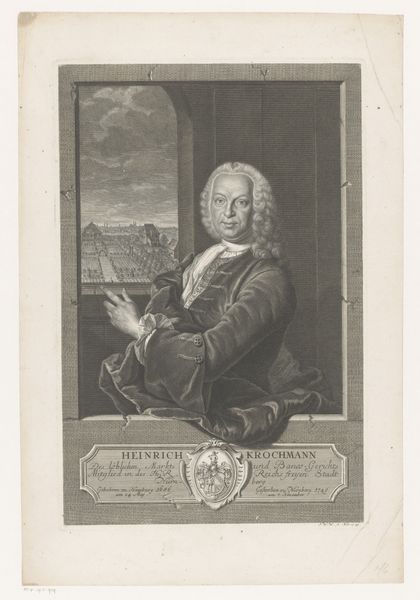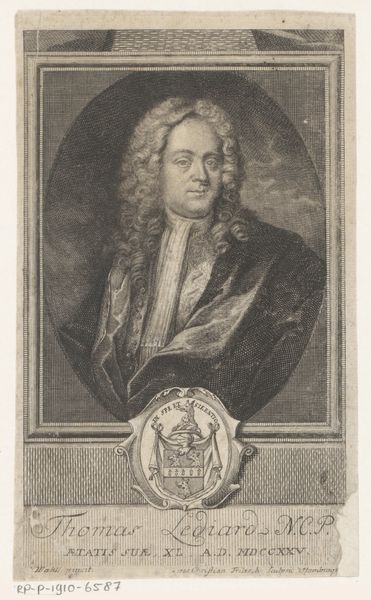
engraving
#
portrait
#
baroque
#
caricature
#
charcoal drawing
#
history-painting
#
engraving
Dimensions: height 351 mm, width 253 mm
Copyright: Rijks Museum: Open Domain
Curator: Here we have "Portrait of Daniel Lock," an engraving dating roughly between 1751 and 1765, currently held at the Rijksmuseum. The print was produced by James McArdell after William Hogarth. Editor: The detail is fantastic. Even without colour, you can see the richness of the fabrics and the detail in his wig. I am immediately drawn to the tools and designs Lock is presenting; you can see the physical skill to generate that rendering! Curator: Yes, the sitter is indeed displaying the tools of his trade. Daniel Lock served as a commissioner of the Royal Naval Dockyard at Deptford, effectively a project manager overseeing ship construction and repair. This portrait emphasizes his profession and status within that bureaucracy. Editor: Fascinating. Look at how Hogarth’s original drawing translated through McArdell’s engraving process. It makes you think about the labor that goes into replicating an image, making it accessible to a wider audience. Were these prints intended for display within the dockyard or perhaps to commemorate specific projects? Curator: More likely the prints were produced as commercial venture and sold to those wanting a souvenir of the individual depicted and those who collected prints after Hogarth’s original works. In the background, there is even a faint outline of a busy cityscape which would underscore Lock’s civic contributions. It's interesting how the Baroque style is adapted here to portray a man of industry rather than nobility. Editor: The composition feels almost propagandistic. Hogarth and McArdell made a deliberate choice to ennoble Lock, to elevate craftsmanship. How subversive! In this case, printmaking democratizes portraiture and immortalizes not just royalty, but the rising middle class and the skilled laborers. Curator: I find it very compelling to consider how art disseminates and how McArdell used it for professional leverage, translating a painting by Hogarth and making it his own. It highlights the complex relationship between artist, engraver, and their public, during that time. Editor: Yes, absolutely, it shifts the focus from mere artistry to the economics of art, reproduction, and the celebration of labor. I am always captivated by artwork and recognizing how deeply enmeshed the image is in societal fabrics and labor relations.
Comments
No comments
Be the first to comment and join the conversation on the ultimate creative platform.
